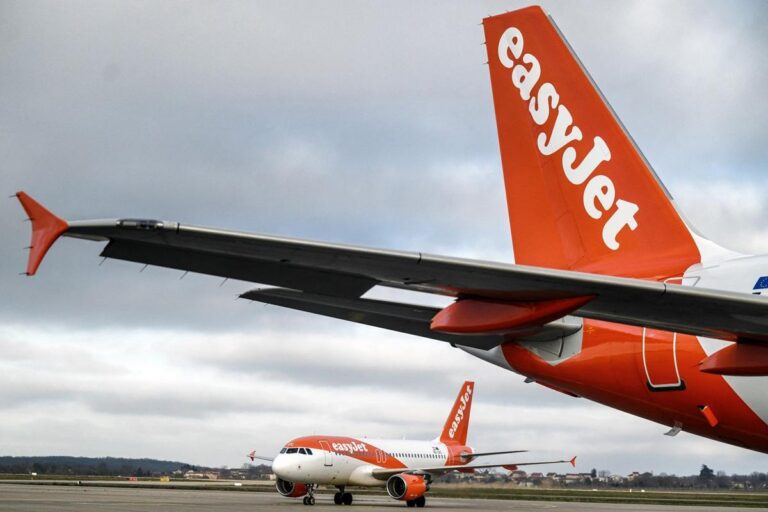Introduction
In a startling incident that unfolded aboard an EasyJet flight from France to Porto, authorities were compelled to divert the aircraft after a passenger, exhibiting erratic behavior, attempted to breach the cockpit. The aircraft, which had been cruising toward its destination, made an unexpected landing, prompting swift action from the crew and law enforcement. As details emerge, questions loom over passenger safety and security protocols in the aviation industry. This incident not only highlights the challenges flight crews face in managing in-flight disturbances but also raises important discussions about the mental health of travelers in today’s tumultuous world.
France Experiences Flight Diversion Due to Passenger Disturbance
An EasyJet flight from France to Porto was forced to divert on Monday after a *passenger displayed erratic behavior*, attempting to breach the cockpit. Witnesses reported a scene of chaos as cabin crew and fellow passengers worked together to restrain the individual, whose actions triggered safety protocols and heightened alertness on board. Following the incident, the aircraft landed safely at the nearest airport, where law enforcement met the plane to apprehend the individual, ensuring the safety of all passengers and crew.
The diversion resulted in considerable delays for passengers, many of whom expressed frustration but also relief that the situation was resolved without injury. The airline has stated that it will conduct a full investigation into the matter and will support those affected. In light of this event, travelers are reminded of the importance of calm and cooperation during flights, as disturbances can pose serious risks to the safety of all on board.
Impact of In-Flight Disruptions on Airline Safety Protocols
The recent incident involving an EasyJet flight from France to Porto has cast a spotlight on how in-flight disruptions can dramatically alter airline safety protocols. The attempt by a delirious passenger to gain access to the cockpit is not just alarming but highlights the vulnerabilities that exist during air travel. Airlines respond to such scenarios by activating rigorous safety measures aimed at ensuring the protection of both passengers and crew. These measures often include immediate coordination with ground control, escalation to law enforcement, and even potential diversions to the nearest airport, as was the case in this situation.
In the aftermath of this event, airlines may reassess their in-flight security practices to prevent future occurrences. Emergency training for crew members is likely to be intensified, focusing on managing unruly passengers effectively. Steps to implement could include:
- Reinforcement of cockpit security: Increasing barriers and alert systems to safeguard against unauthorized access.
- Enhanced crew training: Fostering skills in conflict resolution and passenger management.
- Communication protocols: Streamlining processes between cabin and cockpit crews to facilitate rapid response to disturbances.
The importance of these alterations cannot be overstated; understanding how in-flight incidents can disrupt not only a single flight but also overall airline safety practices is essential for the aviation industry. Recent trends in disruptive behavior among passengers have prompted stakeholders to heighten their awareness and response strategies, ensuring that airline safety remains paramount.
Recommendations for Enhancing Passenger Behavior Awareness
To promote a safer and more respectful flying environment, it is crucial for airlines and passengers alike to enhance awareness about acceptable behavior during flights. Pre-flight briefings should include a clear outline of regulations surrounding passenger conduct, emphasizing the serious implications of disruptive behavior. Additionally, in-flight training for crew members should focus on identifying and de-escalating potential conflicts with passengers who may display signs of distress or irrational behavior.
| Strategies | Description |
|---|---|
| Awareness Campaigns | Conduct campaigns highlighting the consequences of disruptive behavior. |
| Behavioral Analytics | Utilize technology to monitor potential behavioral risks during flights. |
| Reporting Systems | Establish easy-to-use reporting mechanisms for crew and passengers. |
Furthermore, fostering a sense of community among travelers can significantly influence behavior on board. Encouraging courteous interactions between passengers can create an environment of mutual respect. In-flight entertainment and educational materials that promote appropriate behavior and the importance of adhering to safety protocols may also serve to inform and remind passengers of their responsibilities. By prioritizing these strategies, airlines can contribute to a more dignified and secure flying experience for everyone.
Legal and Regulatory Implications of Cockpit Intrusions in Aviation
The incident involving a delirious passenger attempting to breach the cockpit of an Easyjet flight to Porto underscores the ever-evolving landscape of aviation security and the stringent legal frameworks that govern it. As aviation authorities grapple with an increase in disruptive behavior aboard commercial flights, regulatory bodies have heightened their focus on implementing robust countermeasures. Legal consequences for attempted cockpit intrusions can range from civil penalties to criminal charges, which serve as a stern reminder of the seriousness with which such offenses are treated. In many jurisdictions, laws have been enacted that specifically address threats to flight safety, ensuring that offenders are prosecuted to the full extent of the law.
Moreover, airlines are mandated to report incidents of cockpit intrusions to relevant authorities, which can initiate comprehensive investigations that often involve multiple agencies, including law enforcement and aviation safety boards. Key implications of such incidents include the potential for increased insurance premiums for carriers, along with the possibility of stricter regulations surrounding cabin crew training and passenger screening procedures. Conversely, this incident may prompt discussions about the balance between passenger rights and the need for heightened security measures. No matter the outcome, such events are likely to provoke renewed scrutiny on existing protocols concerning in-flight safety.
Closing Remarks
In conclusion, the recent incident involving an EasyJet flight from France to Porto serves as a stark reminder of the challenges and complexities facing the aviation industry today. The alarming behavior of the passenger, which necessitated the diversion of the flight and the intervention of law enforcement, raises important questions about passenger safety and in-flight security protocols. Authorities are expected to conduct thorough investigations to understand the circumstances that led to this disruption. As travel resumes in a post-pandemic world, ensuring the safety of all passengers remains a paramount concern for airlines and airport security alike. This incident not only highlights the need for vigilance but also underscores the importance of maintaining a safe and secure environment in air travel.




